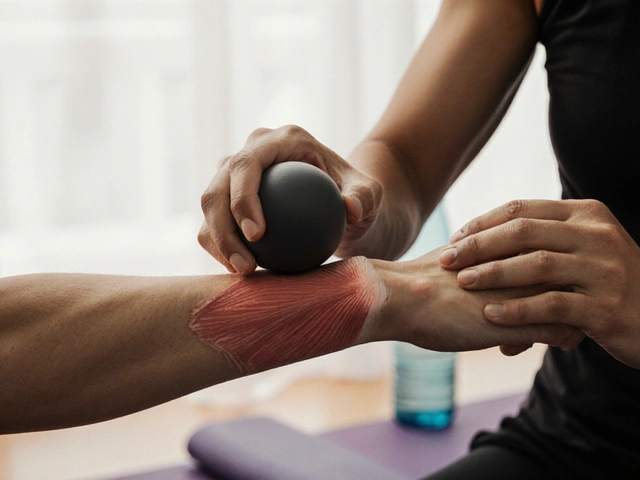Power of Touch: A Practical Guide to Healing Hands
Touch does more than feel good. A focused hand, gentle pressure, or guided movement changes how your body holds stress and pain. This page groups real-world articles on different touch therapies—Hilot, Feldenkrais, Hellerwork, acupressure, Amma, Ortho-Bionomy, Rolfing, stone therapy, trigger point work, and more—so you can find what actually helps you.
How to pick the right touch for your goal
First, name your goal. Want faster recovery after a workout? Try Amma or sports-focused work. Need better posture and long-term alignment? Hellerwork or Rolfing aim at structural change. If you want mindful movement and fewer injuries in yoga, Feldenkrais is built for that. For gentle pain relief that doesn’t push, Ortho-Bionomy and palliative massage focus on ease and comfort. If stress or headaches are your main issue, acupressure and polarity therapy offer quick, at-home moves that help right away.
Also think about style. Some methods use deep pressure and deliberate force; others use slow movement and light touch. If you’re sensitive or managing chronic conditions, choose gentle approaches first—ask for soft pressure and gradual adjustments.
Session tips and safety — simple actions that matter
Before your first session, check credentials. Ask where the therapist trained, how long they’ve practiced, and if they’ve worked with your issue. Good therapists ask questions about medical history, pain patterns, medications, and recent injuries. Tell them if you’re pregnant, on blood thinners, have implants, or recent surgeries—those matter.
Arrive hydrated and avoid heavy meals right before a session. Expect an intake chat, a clear explanation of pressure and techniques, and a plan for aftercare. After a deep session, rest, drink water, and move gently for a few hours.
Know the red flags: skip massage if you have an unexplained fever, infected skin, deep vein thrombosis, or unstable heart conditions unless cleared by a doctor. For surgical areas or severe medical problems, ask your physician and choose therapists trained to work with medical conditions.
Want to try tools at home? Start with short acupressure holds for headaches, slow Feldenkrais-style movements for stiffness, or a warm-stone self-massage on tight shoulders. These are low risk and give you a feel for what helps.
If you’re unsure where to start, book a 30-minute consult or light session first. Tell the therapist what didn’t work before—knowing what failed is as useful as knowing what helped. A single good session can point you to the right path: recovery, relaxation, or a long-term plan for alignment and movement. The power of touch is practical when matched to your goal and delivered by someone who listens.

The Power of Touch: Exploring Trigger Point Massage
Hey there! In this article, we'll delve into the nitty-gritty of trigger point massage, a form of therapy that operates on the power of touch. It's an incredible way to naturally relieve pain and tension. We'll explore how it works, its benefits, and why it's proving to be a real game-changer. It's all about learning to decipher our bodies' signals and response to touch. Dive in to empower yourself towards an enhanced well-being.
Categories
- Health and Wellness (148)
- Alternative Therapies (86)
- Massage Therapy (40)
- Travel and Culture (15)
- Beauty and Skincare (9)
- Holistic Health (8)
- Health and Fitness (5)
- Spirituality (5)
- Other (2)
- Personal Development (2)
Popular Articles

Boost Your Recovery Process with Cross Fibre Release
Nov, 15 2025


